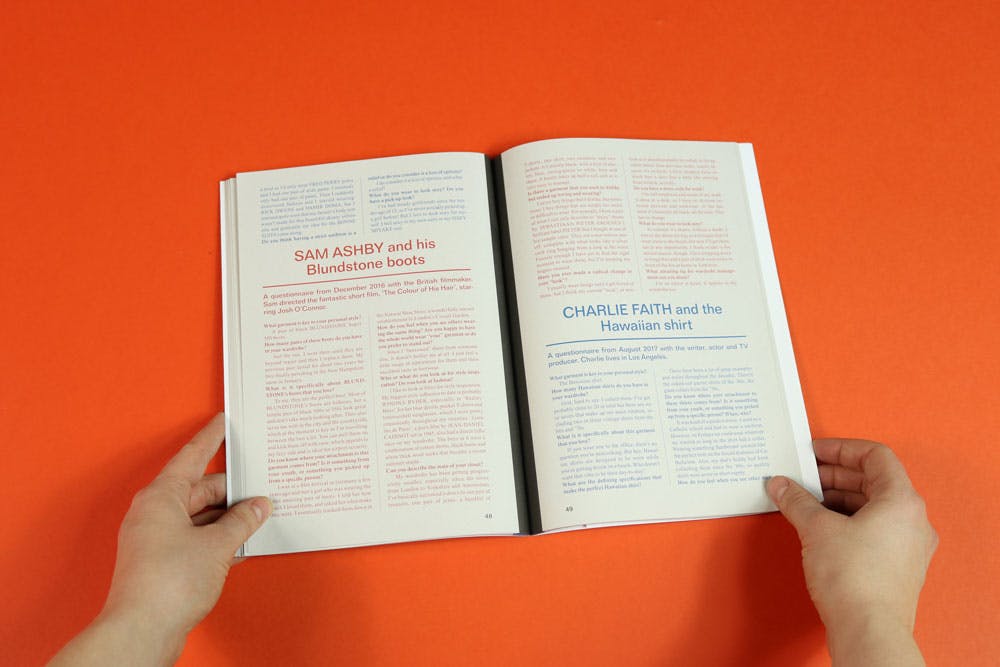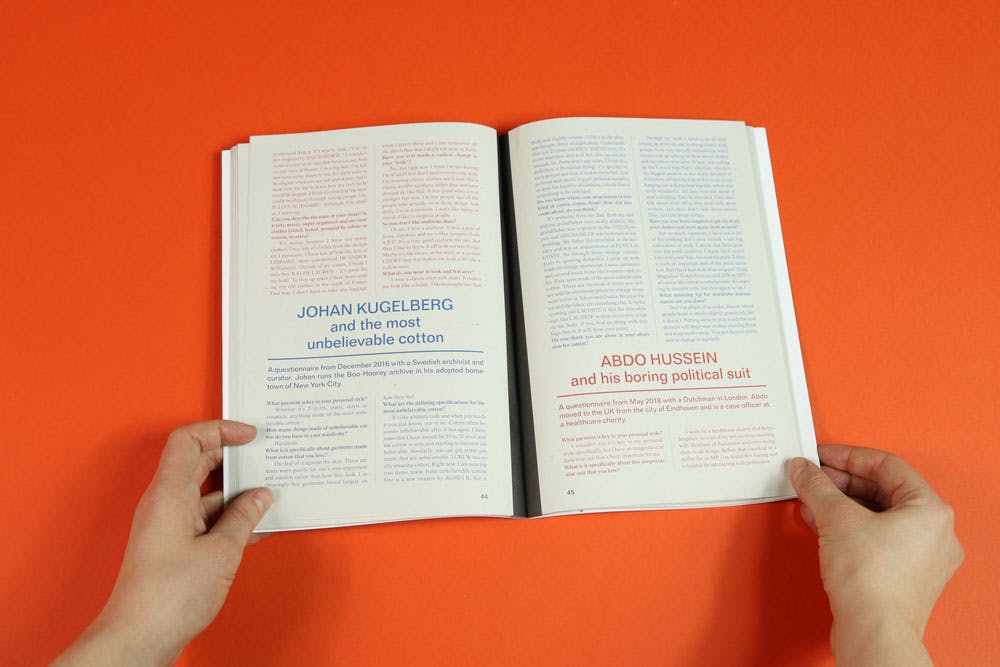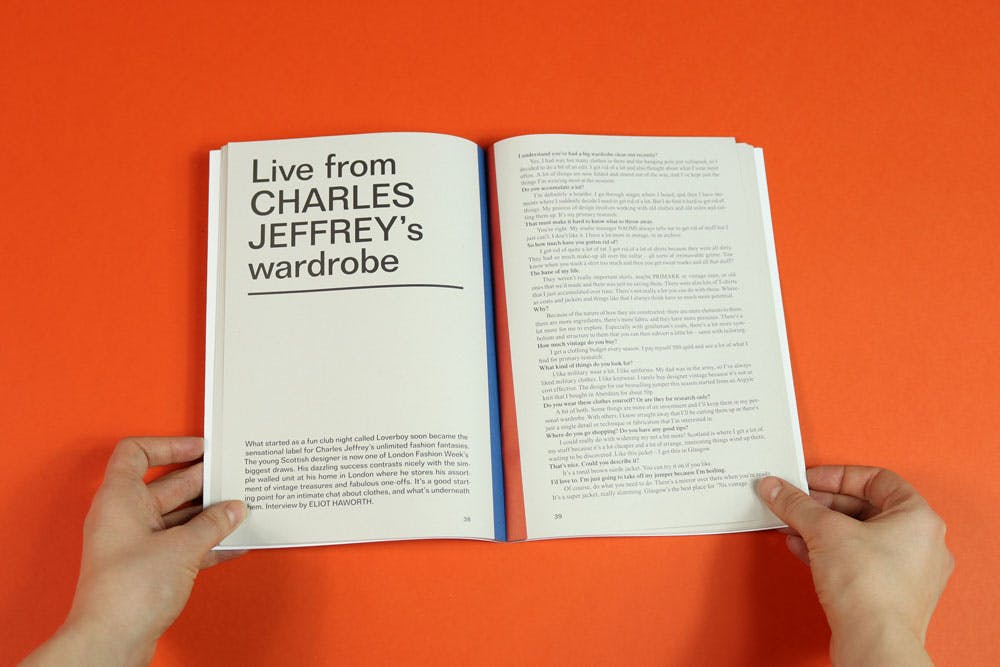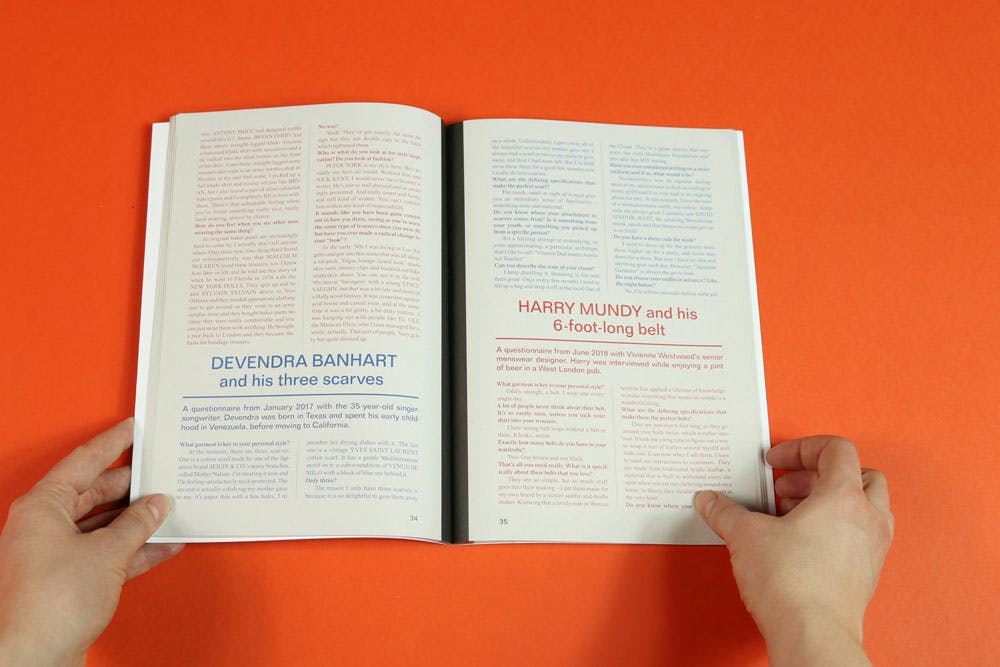“When I see men in cagoules I feel as if they are pissing on my lamppost.”

There is a moment in What Men Wear And Why when a conversation about clothes slips, imperceptibly, into something else entirely. The singer Devendra Banhart is explaining why he wears, at any one time, no fewer than three scarves: the first is made of Japanese cotton; the second is Yves Saint Laurent; but the third is “actually a dish rag my mother gave to me; it’s paper thin with a few holes. I remember her drying dishes with it.”
A collection of 50 questionnaires from Fantastic Man investigating male dressing habits, this slim volume is a testament to the precious, and often slightly insane, memories and associations bound up with what we wear. Clothes are never simply clothes; they are fantasies, and masks, and portals to past and future selves. One particularly revealing day-dream comes from Richard Gray, who longs to throw away everything he owns and replace it with 100 white shirts, 100 pairs of navy trousers and Adidas trainers all in a line: “I’d just go and stand next to them and sniff them”. And then emerge a whole new person: free.
Anyone concerned with what they wear risks being written off as frivolous. For men particularly, clothes are not usually acknowledged for what they are: meaningful, and worthy of interest. So part of the very great pleasure of this unusually pleasurable magazine is discovering that yes, the editorial director of the BBC cares deeply about his well-cut suits. Or that the architect John Pawson is obsessed with white, white shirts. Interestingly, the publication features no pictures at all, so you are forced to make a little dressing room inside your head. Imagining different outfits is something you usually only do with yourself, and the experience of mentally undressing major architects is peculiar, and brilliant.
Below, we’ve collected extracts from three of our favourite interviews in the issue: with Will Self, Richard Gray and Grayson Perry.
WS: The most disgusting thing I was still doing, maybe 12 or 13 years ago, and it shames me to say this, because it’s really heavy: I was wearing shorts, in summer, and actually going out without a jacket. You can’t do that when you are an older man. You mustn’t.
FM: When do you think the cut-off point is?
45.
No shorts after 45? Even on the beach?
Yes, you have to wear a jacket on the beach, unless you’re swimming.
Have you ever been tempted to throw all your clothes away and start again?
Yes, every day! Within me is an inner dandy. And I have a cross-dressing side. I’d like to wear women’s clothes. Well, not women’s clothes — I’d like to wear dresses specifically. I’ve always fantasised about having gaudy and richly embroidered robe-like clothing. I think I’d love hats. I’d love a variety of hats. When I had hair I wished I’d grown it longer and had it dressed much more flamboyantly.
FM: How do you feel when you see other men wearing the same thing? Are you happy to have the world wear “your” garment or do you prefer to stand out?
RG: When I see men in cagoules I feel as if they are pissing on my lamppost.
People should steer clear of your territory?
Yes. I’m particularly bothered by a recent wave of Northern European cagoule-alikes, the cagoule-erati. Back off OUR LEGACY.
Have you ever made a radical change in your look? Would you be tempted to start again from scratch?
Every year I fantasise about just getting rid of everything and spending the rest of my life in Margaret Howell. But that is only because I want to subscribe to the lifestyle of someone who only wears Margaret Howell: an art director or someone that visits galleries every weekend instead of just waking up hung-over on Sunday.
FM: What garment is key to your personal style?
GP: I suppose in the public imagination I’m wearing a flouncy little-girl dress. Once you’ve popped your head over the parapet, the public and the media will glue whatever you’re wearing at that moment onto your body and that will remain fixed. So in the public and the media’s imagination I’m defined conceptually by a flouncy little-girl dress. I call it the crack-cocaine of femininity.
Crack-cocaine? Is there something addictive about flouncy little-girl dresses?
There is if you’re a transvestite. Probably not for many other people.
What is it specifically about little girl dresses that you love?
It’s because I’m a transvestite and they turn me on. It’s just the symbolism of it and how it’s the furthest thing away from macho-functional clothing. It’s all about being pretty and silly and frilly and vulnerable and innocent. Rather than the opposite, which is the guy in his combat fatigues and his tattoos. A lot of transvestites like to dress up as women from the high street to fit in, and I do that sometimes. It’s kind of interesting but no one pays you any attention. You’re just another slightly tall woman walking about. That doesn’t really tick any boxes for me. If I’m wearing a dress, I want to access a certain sort of attention. There’s something fetishistic about it. It’s like when a guy puts on a leather jacket: somewhere deep in his mind he wants to feel that he’s being regarded as a rufty-tufty biker.











